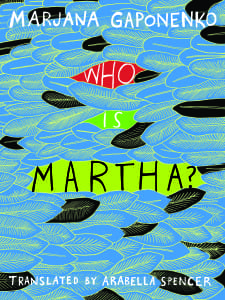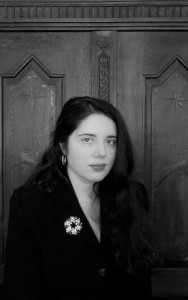Nina Sparling, editorial intern at New Vessel Press, recently asked Marjana Gaponenko, the author of Who Is Martha? (translated by Arabella Spencer), a few questions about her majestic novel. Der Spiegel calls the novel “a celebration of creation and all its wonders, full of the joy of life.” Here’s what Gaponenko had to say.
 NVP: There is something fantastical about this novel, but it remains so grounded in reality: the realities of history, the realities of the aging body. How did you find a balance between Levadski’s playfulness and the gravity of both his past and his present?
NVP: There is something fantastical about this novel, but it remains so grounded in reality: the realities of history, the realities of the aging body. How did you find a balance between Levadski’s playfulness and the gravity of both his past and his present?
MG: This question raises a further question: about the tradition I see my writing belonging to. The discomfort with reality, the uniformity of the industrialized world, being drawn to mystery, playfulness – these are all attributes of romanticism; in particular, the German romanticism which can be seen as an answer to the French revolution and the “spirit of geometry”. There was no return to ornate baroque and the straight line of classicism generated the feeling of crampedness. That’s a description of my feelings in 2014. I am looking for my own romanticism and find it in the midst of reality, in irony.
NVP: What drove you to explore questions of death, aging, family and friendship through the eyes of an ornithologist? What kinds of research went into writing this novel? Did you know anything about birds before you started writing?
MG: I have long sought a suitable career for my lonely Levadski, something poetic, it should be something light, uplifting. Thus the birds came in handy – which raise him above his misery. And yes, I have learned a lot for the book, reading and analyzing different books on birds, observing them, I spent a lot of time in nature. I am now so fond of birds that I cannot help but to observe them and study their behavior. It has become a love for life.
NVP: The last few chapters of the novel strike a beautiful counterpoint between the disintegration of body and mind and the blossoming Levadski’s friendship with Habib, a human connection the reader doubts Levadski has ever known before. What does the friendship they form teach Levadski?
MG: This connection gives him the feeling at the end of his life, that his little modest and reclusive live was beautifully and worth living – just in the moment when he doubts this. He had no family and no grand circle of friends – but that was his way. Habib’s sympathetic silence in Levadskis suite allows him to taste a joyful, socially fulfilling life in a short time. Although the proximity of the butler is bought, it is a voluntary gift of youth to the old, of a stranger to another stranger, of a Palestinian to a Jew.
NVP: Throughout the novel, Levadski’s mother hovers in the background. Both have suffered tragedy, and suffered it together. Does he return to Vienna to find something of her before motherhood?
MG: I imagine that one wants to return at the end of one’s life to the old sources to lighten up again the old good times and to close life’s circle. One can do this mentally but also physically. Levadski returns because of sweetness. Because sweet was the taste of the Imperial pie of his childhood. Now he is back in the old hotel and eats the pie for two, for himself and for his mother who had experienced many hardships.
NVP: The question, “Who is Martha?” persists throughout the book. We only hear about her twice – at Levadski’s birth and death. Why Martha? What is the significance of this?
MG: READ THE BOOK TO FIND OUT …

Author Marjana Gaponenko